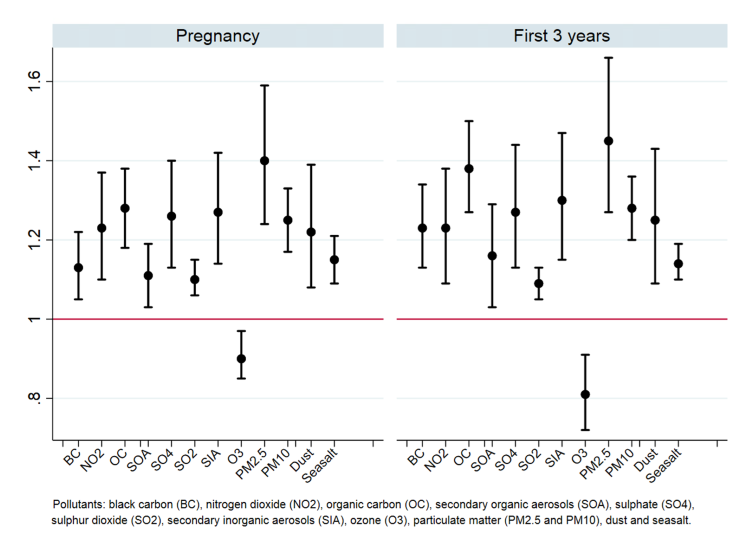Abstract
Background: No studies have so far investigated if air pollution in Iceland is related to development of childhood asthma.
Aim: To investigate associations between air pollution and asthma in Icelandic children.
Methods: The study population consisted of all 59 365 singleton births in Iceland in the period 2005-2018. We analysed residential exposure to air pollutants during pregnancy and first 3 years of life in relation with asthma hospitalizations (ICD-codes J45-J46), using Cox regression with age as underlying time scale and adjusting for maternal (education, marital status, own asthma, age at offspring's birth), offspring (birth month and birth year, sex) and household (urban/rural residency, income) covariates.
Results: Asthma hospitalisations were more frequent in boys (5%) than girls (3%). Mean annual exposures of PM2.5, PM10 and NO2 were relatively low: 3.9 µg/m3, 12.2 µg/m3 and 7.8 µg/m3, respectively. However, 26, 1 and 37 percent were exposed to pollution exceeding WHO recommended annual means for PM2.5, PM10 and NO2, respectively. Apart from ozone, all air pollutants increased risk of childhood asthma with odds ratios ranging from 1.09 to 1.45, with PM2.5 posing the highest risk (see Figure). Associations during pregnancy and the first three years of life were of similar magnitude.
Conclusion: All air pollution exposures in this study, except ozone, increased the risk for childhood asthma in Iceland.
